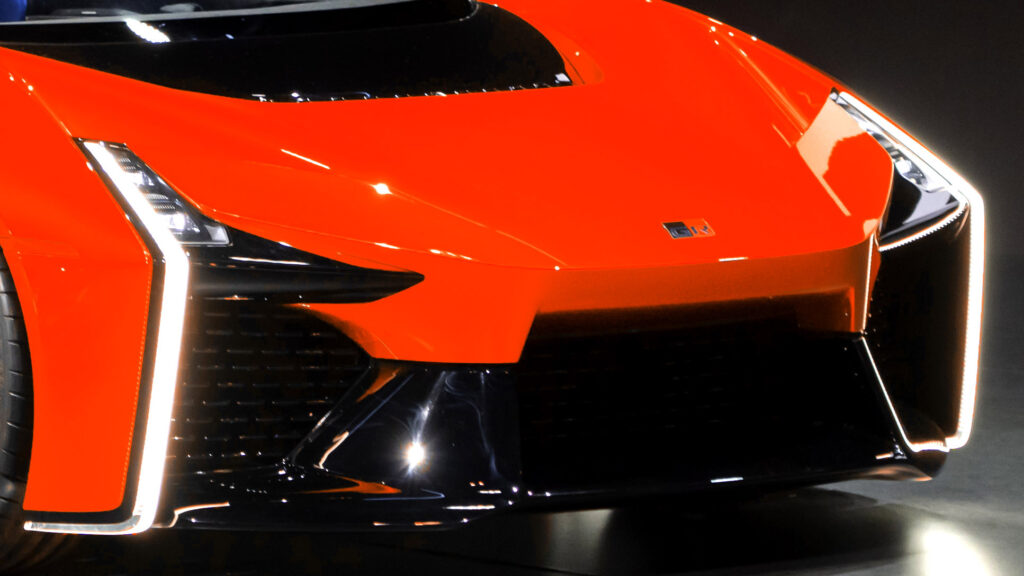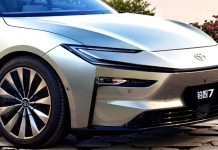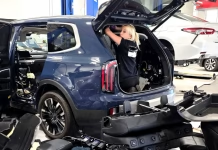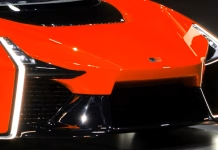Toyota bZ7 Debuts as High Tech Electric Sedan Rivaling Tesla Model S in China
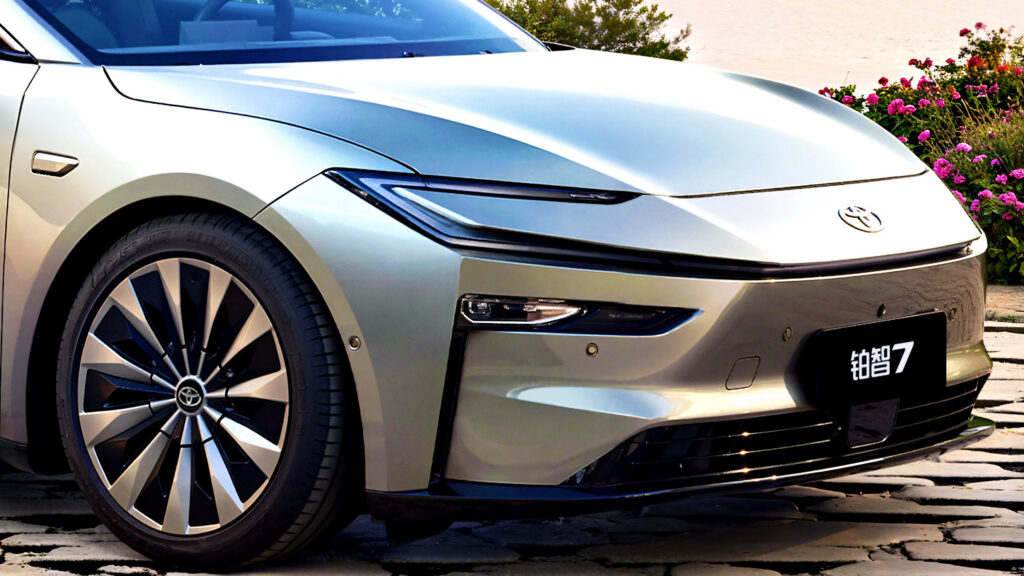
VW Polo Celebrates 50 Years with Thrilling Gymkhana Stunts and a Glimpse at Its...

JLR cyber attack halts global car production and sparks urgent calls for government support
 No new Land Rover cars have been produced since 1 September cyber attack; issues affecting JLR globally
No new Land Rover cars have been produced since 1 September cyber attack; issues affecting JLR globally
JLR is still unable to build any cars at any of its global factories three weeks on from a cyber attack that crippled its business – and worries are now growing that those in its supply chain could go bankrupt.
The Jaguar and Land Rover maker was targeted by hackers on 1 September and is still in the process of rebuilding its computer systems. The group that hit Marks & Spencer earlier this year has claimed responsibility.
This has led to production shutdowns at all of JLR's global plants, parts ordering issues and retailers being stifled. A timescale for a fix is yet to be announced.
The effect could be costing JLR up to £5 million a day, business economics professor David Bailey told Autocar last week.
Last Wednesday, JLR confirmed data has been "affected" as a result of the cyber attack, which, while not confirmed, is thought to mean customer details were stolen.
JLR told Autocar today (Monday 15 September) that it has no official update to give, but reports over the weekend claimed that some of the firm's suppliers could go bust as a result of the shutdowns.
Former Aston Martin CEO Andy Palmer told the BBC: “I would not be at all surprised to see bankruptcies.”
Palmer added that many suppliers will soon begin to slim their staff count as a result of the shutdown, saying: “You hold back in the first week or so of a shutdown; you bear those losses. But then you go into the second week, more information becomes available – then you cut hard. So layoffs are either already happening or are being planned."
To prevent widespread job losses, the government is facing calls for a furlough scheme to be set up, similar to that used during the Covid pandemic. This would involve the government subsidising workers' pay packets while they are unable to do their jobs, taking the burden off their employers.
One of those making the call is Commons Business and Trade Committee chairman Liam Byrne.
The Labour MP said: "What began in some online systems is now rippling through the supply chain, threatening a cashflow crunch that could turn a short-term shock into long-term harm. We cannot afford to see a cornerstone of our advanced manufacturing base weakened by events beyond its control."
The general secretary of trade union Unite, Sharon Graham, has also called for a furlough scheme.
“Thousands of these workers in JLR's supply chain now find their jobs are under an immediate threat because of the cyber attack," she said. "Ministers need to act fast and introduce a furlough scheme to ensure that vital jobs and skills are not lost while JLR and its supply chain get back on track."
JLR hack: what happened?
Autocar first reported issues affecting JLR on 1 September, when dealers couldn't register new cars on 'new plate day' , traditionally one of the year's busiest for registrations.
In an effort to combat the hack, JLR began “shutting down our systems” on 2 September.
It's still in the process of rebuilding them and is unabel to confirm a timescale for the fix.
The hack has left the Jaguar and Land Rover maker crippled. No cars have been produced globally since, leading to millions of pounds of lost income.
The extent of the issues meant JLR brought in police and cybersecurity experts in to “restart our global applications in a controlled and safe manner”.
During this process, which included an investigation, it was discovered that "some data" was "affected", said JLR. Those affected will be contacts, said the firm.
It's not officially known what data was taken or if a ransom demand has been made.
Who has claimed responsibility for JLR hack?
On 3 September, a group of hackers calling themselves Scattered Lapsus$ Hunters claimed responsibility for the attack on JLR.
This is the same group that hacked Marks & Spencer in May, causing the British retailer seven weeks of disruption and costing £300 million in lost operating profit.
It claimed to have obtained customer data after exploiting a similar flaw in JLR’s IT system. The claim was made on a Telegram messenger group, where a user linked to the hackers posted a screenshot of what appeared to show JLR's internal system.
A member of the group revealled that a well-known flaw in SAP Netweaver, third-party software used by JLR, was exploited to access the data.
The US's Cybersecurity and Infrastructure Security Agency warned about the flaw earlier this year. An update for the software was released, but whether JLR applied it is unknown.
It's also not known what data was taken or if a ransom demand has been made of JLR.
Packard Excellence returns as a stunning one-off luxury sedan blending classic style with Bentley...

Electric Cars Take Center Stage as AMG Considers High Performance Two Door GT Coupe
 AMG boss says work is under way to determine viability of an electric version of its Porsche 911 rival
AMG boss says work is under way to determine viability of an electric version of its Porsche 911 rival
Mercedes-AMG is exploring an electric version of the AMG GT sports coupé - but it needs to “justify the investment” said the performance brand’s boss.
AMG has already confirmed an electric successor to the GT 4-door Coupé will arrive next year, previewed by the GT XX Concept (below). It will be the first car to sit on the 800V AMG.EA platform, which will also be used for the brand’s incoming super-SUV due in 2027.
Now AMG boss Michael Schiebe has said work is underway to see if a battery-electric version of the two-door GT is viable.
“There is an emotional discussion and a rational discussion,” said Schiebe said at the Munich motor show. ”Emotionally, yes, we should do that. The question is whether there is a market that is big enough to justify the investment that is necessary, at least from a technology point of view, we know how to do that.”
A key focus for AMG is which customers the car will target. The ICE model (below) is currently bought mainly as a second car for “those who love driving”, so the EV would need to focus on that also, said Schiebe.

But, he said, the brand hasn’t put a timeframe on when they would bring it to market and is “flexible” on a launch date - for example, it could accelerate the programme if interest in electric performance cars suddenly rockets over the next few years.
He explained: “We are at the moment trying to understand what's going on in the market. And then we define the target picture of that very specific car.”
Mercedes has some form in this space, having previously built an electric version of the old AMG SLS - and used it to set an EV lap record at the Nürburgring. However, it was only ever sold in extremely low numbers and was retired without a direct successor.
If green-lit, Scheibe said a new EV coupé would continue to be sold alongside the combustion model, which the brand will “continue to invest in” well into the next decade.
“I would say we are very successful with our combustion-engined GT 2-door,” he said. “So we will focus on that first and then let's see when the right point and time is there to launch a two-door EV.”
He added: “We want to be in terms of technology and performance successful, but also economically successful. We do whatever is, let's say, worth investing the money. And at the moment, I would say we are more successful investing into our two door combustion engine platform than doing this on the electric side. But here we are flexible, so flexible because we are constantly reviewing our portfolio and looking into that.”
Ultimately, Schiebe hinted that such a model might be brought to market as a halo car, regardless of its commercial viability. “Sometimes you make a car which is not the most profitable one, but you do it because it's so important for the brand, and it's like, you need to do it because it's a brand-shaper."
If AMG does build an electric version of the GT, it could serve as the first direct rival to the Maserati Granturismo Folgore, which is currently the only EV super-coupé on sale. Rivals including the Porsche 911, Aston Martin Vantage and Ferrari Amalfi remain exclusively combustion-powered - and will do for several years to come.
AI Tyre Design Revolution How Artificial Intelligence Is Shaping Safer Smarter Treads
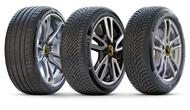 Tyre tread patterns are mostly science plus a little bit of art
Tyre tread patterns are mostly science plus a little bit of art
Like so many other things, tyre design is falling under the influence of AI. The tech is being used to predict the effectiveness of different tread patterns and simulate how they might behave in the real world.
Tyres have come a long way during their evolution, and this is one of those cases where a glimpse back into the past helps put things in perspective.
It’s just over 120 years since the first tread of any kind appeared, and although Dunlop was on the verge of adding simple grooves to its previously smooth tyres, Continental just pipped it (and other tyre makers) to the post.
A Dunlop ad of 1906 read: “This is the NON-SLIPPING DUNLOP TYRE you’ve heard so much about.” But three years earlier a Continental newspaper advert tempted visitors to the German motor show in Frankfurt with: “The 100mm pneumatic tire fits 85 and 90mm rims. The 125mm pneumatic tire fits 120mm rims. Both tyre types are available in smooth and anti-slip versions.”
Back then, the simple ‘anti-slip’ grooves, longitudinal in the case of the German manufacturer and transverse for Dunlop, were cut by hand, but these days tread patterns are a lot more complex.
Some tread patterns may look like a fairly random arrangement of grooves and chunks of rubber, while others are more ordered, but they are all meticulously engineered to serve a purpose and all have similar features and components.
They all have blocks, which are the protruding parts of the tread in contact with the surface, and it’s the sharp edges of these blocks that play a major part in generating grip.
Grooves are the spaces between the blocks, and they channel water away and may be arranged in different directions. Multiple cross-grooves complement the main grooves around the tyre’s circumference.
Ribs are solid circumferential bands giving stability and sharp steering, but perhaps the cleverest features are the sipes, fine slits in the blocks whose role is to improve the flexibility of the tread.
Each sipe creates more edges, which increases grip, while complex three-dimensional sipes in snow tyres trap snow to, surprisingly perhaps, grip packed snow and ice on the road surface (snow sticks very well to snow – think making a snowball or snowman).
This overlooked, 120-year-old technology is fiendishly complex, and it’s why computer-aided design and simulation plays such a big part in improving performance.
Tyre developers come up with the technical structure comprising the elements, then industrial designers create a distinctive pattern – because appearance matters, too.
AI is becoming important because, looking beyond the hype over what it can and can’t do, it is particularly good at analysing vast amounts of data in a level of detail that often wasn’t possible before.
In this case, its use to optimise tread patterns in the virtual world before a test tyre is made should prove invaluable and, hopefully, lead to better performance and grip.
Spirit Airlines Faces Critical Financial Struggles

Kia Telluride Wiring Flaw Triggers Massive Repair for Tiny Factory Mistake

Lotus Elise Restomod Sheds Serious Weight With Carbon Body And Central Seat

Toyota GR Celica Returns as Mid-Engine AWD Powerhouse to Rival Next-Gen Supra
